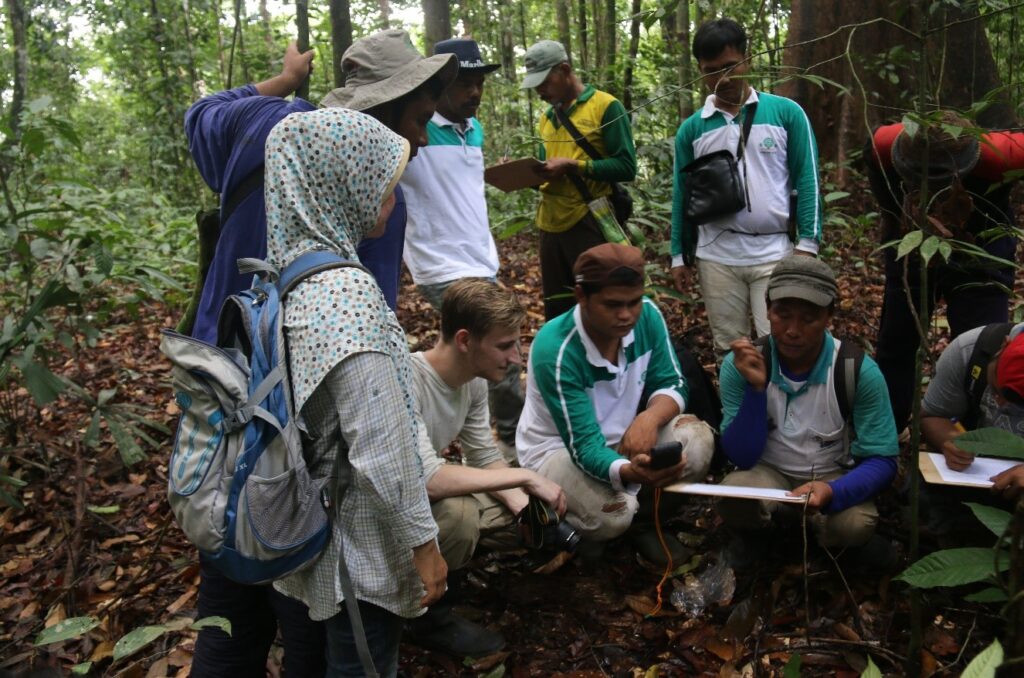The results of vegetation analysis through the Forest Health Monitoring (FHM) plot obtained that 27.4% of tree species in Lesan River Protection Forest FHM plot area are fruit producers for orangutan food, including: Aglaia sp, Artocarpus sp, Dacryodes rostrate, Dipterocarpus palembanicus, Durio sp, Elateriospermum sp, Lansium domesticum, Litsea sp, Mangifera sp, Santiria sp, Diospyros, Ficus sp, Syzygium, and Baccaurea sp.

In 2015, OWT collaborated with Van Hall-Larenstein University, Netherlands to conduct a study on orangutan populations. A short-term orangutan population study has been conducted in Lesan River Protection Forest, a former logging concession in the Berau district, East Kalimantan, Indonesia. This survey relied on a refined nest counting method by line transect observations.
A total of 17.4 kilometers of transect lines have been observed over a period of eight weeks of extensive fieldwork. With a total database of 201 orangutan nests, population densities of two different vegetation types were estimated. After vegetation type proportions had been taken into account, an average 1,84 individuals per square kilometer was estimated. This density results in an estimated total orangutan population of 176 in the Lesan River Protection Forest. A vast decline in population was shown when these data were compared to numbers found in previous surveys in 2004 and 2006. This might suggest that the current habitual situation and management provide an insufficiently sound situation for the orangutan population to remain stable.
